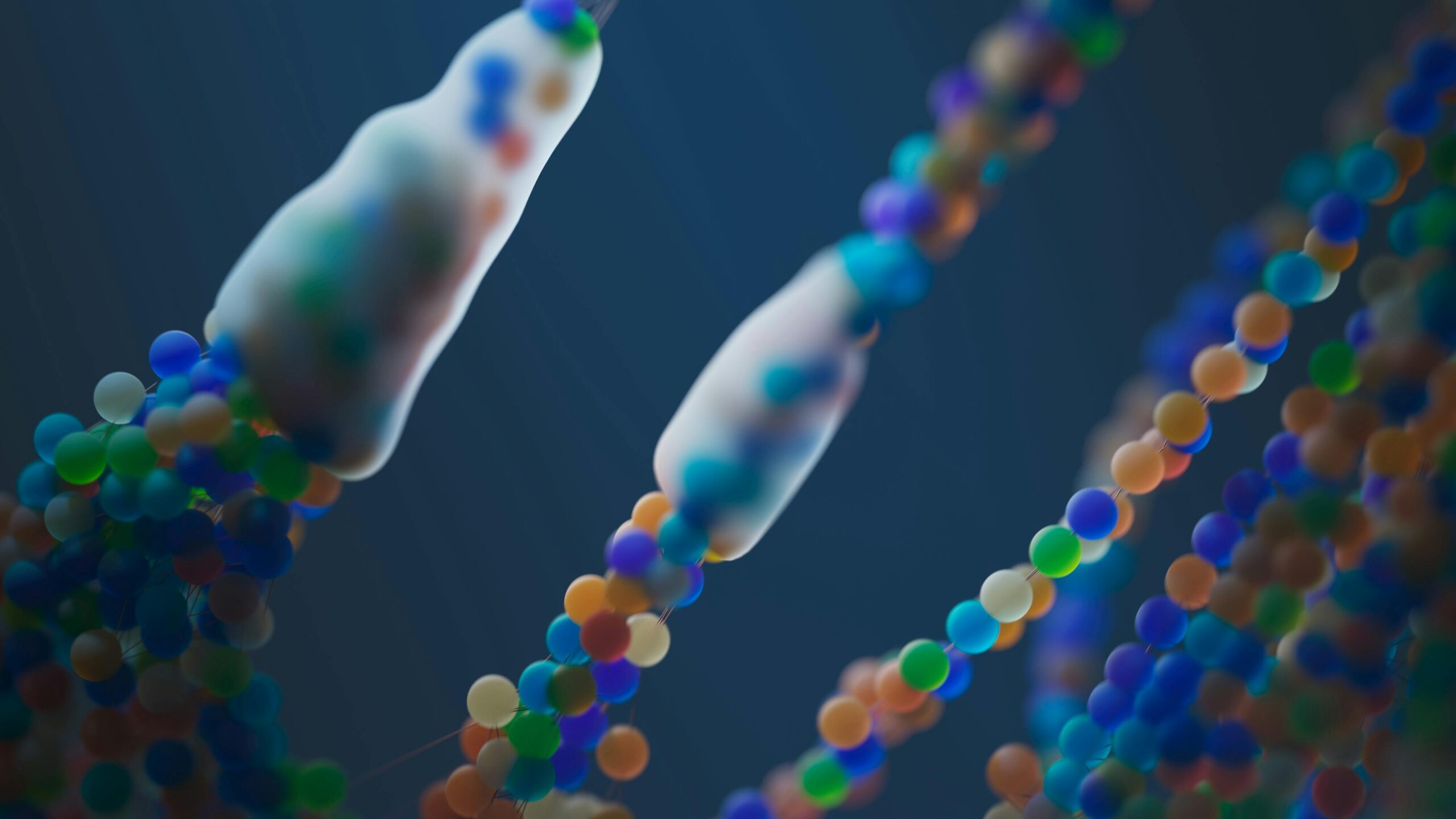The discovery of CRISPR-Cas systems has fundamentally transformed our understanding of genetic engineering, offering unprecedented precision in editing the very blueprint of life itself.
For centuries, scientists have dreamed of possessing the ability to rewrite genetic information with surgical precision. What once seemed like the realm of science fiction has now become tangible reality through CRISPR technology. This remarkable molecular tool, adapted from bacterial immune systems, represents one of the most significant scientific breakthroughs of the 21st century. The implications stretch far beyond laboratory walls, touching everything from agriculture and environmental conservation to the treatment of previously incurable diseases. As we stand at this pivotal moment in scientific history, understanding CRISPR’s journey from bacterial defense mechanism to revolutionary biotechnology reveals not just how far we’ve come, but illuminates the extraordinary possibilities that lie ahead.
🧬 From Bacterial Defense to Biotechnology Marvel
The story of CRISPR begins not in a high-tech laboratory, but within the microscopic world of bacteria. These single-celled organisms developed CRISPR-Cas systems over millions of years as an adaptive immune defense against viral infections. When a virus attacks a bacterium, the CRISPR system captures small pieces of the invader’s DNA and stores them as a molecular memory. If that same virus attacks again, the bacterium recognizes it and deploys Cas proteins—molecular scissors—to cut and destroy the viral genetic material.
Scientists first noticed unusual repeating DNA sequences in bacteria during the late 1980s, but their function remained mysterious for years. The acronym CRISPR stands for Clustered Regularly Interspaced Short Palindromic Repeats, describing these peculiar genetic patterns. It wasn’t until 2012 that researchers Jennifer Doudna and Emmanuelle Charpentier demonstrated how this bacterial system could be reprogrammed to edit virtually any DNA sequence. Their groundbreaking work earned them the Nobel Prize in Chemistry in 2020 and opened floodgates of scientific innovation.
Understanding the Molecular Machinery Behind Gene Editing
At its core, CRISPR-Cas9 functions like a highly sophisticated search-and-replace tool for genetic code. The system consists of two key components: a guide RNA molecule that acts as a genetic GPS, directing the system to the precise location in the genome that needs editing, and the Cas9 protein, which functions as molecular scissors to cut the DNA at that exact spot.
Once the DNA is cut, the cell’s natural repair mechanisms kick into action. Scientists can exploit this repair process in two primary ways. They can simply disrupt a problematic gene by allowing the cell to repair the break imperfectly, effectively turning that gene off. Alternatively, they can supply a template for the correct genetic sequence, allowing the cell to incorporate this new information during repair—essentially rewriting that section of the genetic code.
The Precision Revolution in Genetic Manipulation
What makes CRISPR truly revolutionary is its precision, efficiency, and versatility. Previous gene-editing technologies like zinc finger nucleases and TALENs were expensive, time-consuming, and required extensive expertise to implement. CRISPR democratized gene editing, making it accessible to laboratories worldwide. A procedure that once took months and cost thousands of dollars can now be completed in weeks for a fraction of the price.
The system’s programmability represents another quantum leap forward. By simply changing the guide RNA sequence, researchers can target virtually any gene in any organism. This flexibility has accelerated biological research exponentially, allowing scientists to investigate gene function, model diseases, and develop therapies at unprecedented speeds.
🏥 Transforming Medicine: From Lab Bench to Patient Bedside
The medical applications of CRISPR technology have progressed from theoretical possibilities to clinical realities with remarkable speed. The first human trials using CRISPR began in 2016, and since then, the therapeutic landscape has expanded dramatically. Scientists are now pursuing CRISPR-based treatments for conditions ranging from genetic blood disorders to cancer and infectious diseases.
One of the most promising success stories involves sickle cell disease and beta-thalassemia, two inherited blood disorders caused by mutations in the hemoglobin gene. In groundbreaking clinical trials, patients’ blood stem cells were removed, edited using CRISPR to correct the genetic defect, and then reinfused. Many patients have experienced dramatic improvements, with some achieving complete remission of symptoms that had plagued them since birth.
Cancer Immunotherapy Gets a Genetic Upgrade
CRISPR is also revolutionizing cancer treatment through enhanced immunotherapy approaches. Scientists are using the technology to engineer patients’ T cells—immune system warriors—making them more effective at recognizing and destroying cancer cells. By editing specific genes, researchers can remove the molecular brakes that tumors place on immune responses, essentially supercharging the body’s natural cancer-fighting abilities.
Early clinical trials have shown encouraging results, particularly for patients with treatment-resistant cancers. Unlike traditional chemotherapy that attacks all rapidly dividing cells, these CRISPR-enhanced immunotherapies offer the promise of highly targeted treatments with potentially fewer side effects.
Addressing Infectious Diseases at the Genetic Level
The fight against infectious diseases has gained a powerful new weapon in CRISPR technology. Researchers are developing innovative approaches to combat viral infections by targeting the genetic material of pathogens themselves. This strategy holds particular promise for viruses that integrate their DNA into host cells, such as HIV and herpes simplex virus, which have historically been difficult or impossible to cure.
Scientists are also exploring CRISPR’s potential to combat antibiotic-resistant bacteria, one of the most pressing global health challenges. By targeting genes responsible for antibiotic resistance or essential for bacterial survival, CRISPR-based antimicrobials could provide precision weapons against superbugs that no longer respond to conventional antibiotics.
Key Medical Applications Currently Under Investigation
- Hereditary blindness caused by genetic mutations affecting retinal cells
- Duchenne muscular dystrophy and other genetic muscle disorders
- Cystic fibrosis through correction of the CFTR gene mutation
- Huntington’s disease and other neurodegenerative conditions
- Cardiovascular diseases linked to genetic risk factors
- Liver diseases including hereditary tyrosinemia
- Blood clotting disorders such as hemophilia
🌾 Agricultural Revolution: Feeding Tomorrow’s World
Beyond human medicine, CRISPR is transforming agriculture and food production. As global population continues to grow and climate change threatens traditional farming practices, the ability to precisely edit crop genomes offers solutions to pressing food security challenges. Unlike traditional genetic modification that often involves inserting foreign genes, CRISPR can make precise changes that could occur naturally through breeding—just much faster.
Researchers have developed drought-resistant crops that maintain productivity even under water-stressed conditions. Disease-resistant varieties reduce the need for chemical pesticides, benefiting both the environment and human health. Scientists have created tomatoes with enhanced nutritional profiles, wheat resistant to powdery mildew, and mushrooms that don’t brown as quickly, reducing food waste.
Livestock and Aquaculture Improvements
Animal agriculture is also benefiting from CRISPR applications. Scientists have engineered pigs resistant to porcine reproductive and respiratory syndrome, a devastating viral disease. Cattle are being developed with enhanced heat tolerance, crucial for maintaining productivity as global temperatures rise. In aquaculture, researchers are creating faster-growing fish and disease-resistant strains that could help meet growing demand for seafood while reducing environmental pressure on wild populations.
Environmental Conservation and Ecological Applications 🌍
CRISPR technology offers innovative approaches to environmental challenges and species conservation. Scientists are exploring gene drives—systems that could spread specific genetic modifications through wild populations—as potential tools to combat vector-borne diseases like malaria and dengue fever. By engineering mosquitoes unable to transmit these deadly pathogens, researchers hope to reduce disease burden in affected regions.
Conservation biologists are investigating whether CRISPR could help save endangered species by increasing genetic diversity in small populations or by conferring resistance to diseases that threaten extinction. Some researchers have even proposed using gene editing to resurrect extinct species or to help existing species adapt to rapidly changing environmental conditions.
Ethical Considerations and Societal Implications
The immense power of CRISPR technology inevitably raises profound ethical questions. The 2018 announcement that a Chinese scientist had created the first gene-edited babies shocked the scientific community and highlighted the urgent need for robust international governance frameworks. The researcher, who was subsequently imprisoned, had edited the CCR5 gene in twin girls in an attempt to confer HIV resistance—an action widely condemned as premature and ethically unjustifiable.
This incident crystallized concerns about heritable genetic modifications—changes that would be passed to future generations. While editing somatic cells (non-reproductive cells) to treat disease in an individual patient raises fewer ethical concerns, germline editing that affects eggs, sperm, or embryos opens complex questions about consent, unintended consequences, and the potential for creating genetic inequalities.
The Societal Divide: Access and Equity
As CRISPR therapies move from experimental to established treatments, questions of access and equity become increasingly pressing. Will these revolutionary treatments be available only to wealthy individuals in developed nations, or will systems be established to ensure global access? The high initial costs of developing and administering gene therapies could exacerbate existing health disparities unless deliberate efforts are made to ensure equitable distribution.
There are also concerns about the potential misuse of gene-editing technology for enhancement rather than treatment—creating “designer babies” with selected traits such as intelligence, athletic ability, or appearance. Such applications raise fundamental questions about human dignity, social justice, and what it means to be human.
Technical Challenges and the Next Generation of Gene Editing
Despite its revolutionary potential, CRISPR technology is not without limitations. Off-target effects—unintended edits at wrong locations in the genome—remain a concern, though newer iterations of the technology have dramatically improved precision. Delivering CRISPR components to the right cells in the body, particularly in organs like the brain or muscles, presents significant technical hurdles.
Scientists are actively developing next-generation gene-editing tools to address these challenges. Base editors can change individual genetic letters without cutting DNA, reducing unwanted side effects. Prime editing offers even greater precision, allowing researchers to insert, delete, or replace genetic sequences with minimal DNA damage. These advances are expanding the treatable spectrum of genetic diseases and improving safety profiles.
Advancing Delivery Methods
Effective delivery systems remain crucial for translating CRISPR’s potential into clinical reality. Current approaches include viral vectors, lipid nanoparticles, and direct injection of CRISPR components. Each method has advantages and limitations depending on the target tissue and therapeutic goal. Ongoing research into delivery mechanisms will be essential for expanding CRISPR applications to more diseases and tissue types.
💡 The Regulatory Landscape and Path Forward
As CRISPR applications multiply, regulatory agencies worldwide are working to establish appropriate oversight frameworks. The challenge lies in creating regulations that ensure safety and ethical use while not stifling innovation. Different countries have adopted varying approaches, reflecting cultural values and risk tolerances regarding genetic modification.
In the United States, the FDA regulates CRISPR therapies as biological products, requiring rigorous testing for safety and efficacy before approval. European agencies have taken similarly cautious approaches to human applications while maintaining stricter regulations around genetically modified organisms in agriculture. International collaboration will be essential for establishing consistent standards and preventing regulatory arbitrage.
Collaborative Science Accelerating Discovery
The rapid advancement of CRISPR technology exemplifies the power of collaborative science. Researchers worldwide are sharing techniques, data, and insights at unprecedented rates. Open-source approaches to developing CRISPR tools have accelerated innovation, allowing scientists to build on each other’s work rather than duplicating efforts.
Academic institutions, biotechnology companies, and pharmaceutical giants are forming partnerships to translate laboratory discoveries into clinical applications. This ecosystem of collaboration, while not without competitive tensions and intellectual property disputes, has been instrumental in moving CRISPR from basic research to therapeutic reality in record time.
Looking Toward a Genetically Edited Future
As we stand at this inflection point in biological science, CRISPR technology’s trajectory suggests a future dramatically different from our present. Within the next decade, we may see CRISPR-based treatments become standard care for numerous genetic diseases. Personalized medicine could become truly personalized, with therapies designed and optimized for individual genetic profiles.
Agriculture will likely continue its transformation, with CRISPR-edited crops and livestock becoming increasingly common. Environmental applications may expand to include ecosystem restoration and climate change adaptation strategies. The technology will undoubtedly continue evolving, with new capabilities and applications emerging as our understanding of genetics deepens.
However, realizing this potential while navigating ethical complexities will require ongoing dialogue involving scientists, ethicists, policymakers, and the public. Establishing robust governance frameworks, ensuring equitable access, and maintaining public trust will be as crucial as the scientific advances themselves.
Empowering the Next Generation of Scientists and Citizens
Education plays a vital role in preparing society for a CRISPR-enabled future. Scientific literacy about genetic engineering will be essential for informed public discourse and democratic decision-making about how these powerful tools should be used. Schools and universities are increasingly incorporating gene editing into curricula, helping students understand both the technical aspects and ethical dimensions of this technology.
Public engagement initiatives are also crucial. When citizens understand what CRISPR can and cannot do, they’re better equipped to participate in societal decisions about its applications. Transparency from the scientific community about both the promise and limitations of gene editing builds the trust necessary for continued progress.

🔬 The Unfinished Revolution
The CRISPR revolution is far from complete. Each answered question opens new avenues of inquiry, and each successful application suggests previously unimagined possibilities. From its origins as an obscure bacterial defense mechanism to its current status as one of biotechnology’s most powerful tools, CRISPR has already transformed multiple fields. Yet we are still in the early chapters of this story.
The challenges ahead—technical, ethical, regulatory, and societal—are substantial. But so too is the potential to alleviate suffering, enhance human capabilities, feed growing populations, and address environmental crises. As CRISPR technology continues maturing and new applications emerge, humanity gains unprecedented ability to shape biological systems, including ourselves.
This power demands wisdom, humility, and responsibility. The decisions we make today about how to develop and deploy gene-editing technologies will reverberate for generations. By proceeding thoughtfully, maintaining ethical guardrails, ensuring equitable access, and keeping human dignity at the center of our considerations, we can harness CRISPR’s revolutionary potential while avoiding its pitfalls. The code of life has been unlocked—now we must decide how to write the next chapters with both boldness and caution, innovation and restraint, hope and responsibility.
Toni Santos is a biotechnology storyteller and molecular culture researcher exploring the ethical, scientific, and creative dimensions of genetic innovation. Through his studies, Toni examines how science and humanity intersect in laboratories, policies, and ideas that shape the living world. Fascinated by the symbolic and societal meanings of genetics, he investigates how discovery and design co-exist in biology — revealing how DNA editing, cellular engineering, and synthetic creation reflect human curiosity and responsibility. Blending bioethics, science communication, and cultural storytelling, Toni translates the language of molecules into reflections about identity, nature, and evolution. His work is a tribute to: The harmony between science, ethics, and imagination The transformative potential of genetic knowledge The shared responsibility of shaping life through innovation Whether you are passionate about genetics, biotechnology, or the philosophy of science, Toni invites you to explore the code of life — one discovery, one cell, one story at a time.




